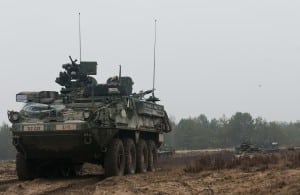
The Army has an urgent operational need to equip armored vehicles in Europe with active protection systems (APS) and is actively searching for ways to fund the effort.“This is a program the Army is actively pursuing,” an Army spokesman confirmed this week to Defense Daily.Army officials have not yet released details of the scope or timeline of the program, but senior service officials have been briefed on the need to procure non-developmental APS equipment for Stryker wheeled vehicles and M1…

 By
By 











